Milkweed: Monarch’s Lifeline -- by Lila Cohen (student intern)
- angelamoon50009
- Feb 13, 2024
- 5 min read
Monarch Butterflies (Danaus plexippus) are an iconically colorful species vividly orange and black, attracting many admirers to their beauty. Beyond their vibrance and widely regarded beauty, Monarchs serve as what is called an indicator species, meaning their presence is an indicator of the overall health of a larger ecosystem. When their population declines, as we have seen in recent years, we learned we must also assess the health and presence of bees and other essential pollinators. Their eye-catching colors and patterns inspire many people to work to save them and in turn protect the overall health and biodiversity of the ecosystem, unlike other species with less conventionally attractive qualities. This attention brought to Monarchs benefits the larger ecosystem as people learn more about this endangered and essential species, and how to protect and get involved in further restoration.
For those not familiar with our work, the Gill Tract farm is a community-run research plot tucked between San Pablo and Marin Avenue in Albany, about four miles from UC Berkeley campus. Our work at the farm focuses on sustainable urban agriculture practices, especially surrounding compost and food production which we provide to the nearby Albany Village Graduate Student Apartments and the larger community. As a new member of the Gill Tract community, I have spent the semester submerging myself in the ecology of the Bay Area, specifically with emphasis on the native wildlife we aim to protect on the farm, i.e. the Monarch butterflies. My current position on the farm is a Monarch intern, where I work on a team with two other UC Berkeley undergraduates applying community science methods to study, observe, and protect migrating Monarchs on the farm. I have learned a great deal about Monarchs since moving to the Bay Area and working at the Gill Tract. Observing and studying them has made me feel like in some way I am a part of their story as a species and in their greater survival.
It is widely thought that the Monarchs overwintering in the Bay Area and the Gill Tract migrate down to Mexico, however, the Monarchs we see are Western Monarchs on their way to Arizona and Idaho with their overwintering range being mostly the Bay Area where the climate is moderate and they can wait out the storms inland. However as continuing urbanization causes green spaces to disappear, they are forced further south in search of a safe place to overwinter. Eastern Monarchs, however, overwinter in Mexico and migrate up into the Midwestern US to breed. This subpopulation is genetically the same species, the only obvious difference being an elongated forewing.
Photos by Lila Cohen: Monarchs nectaring in the Monarch Plot in October 2023
To survive the winter Monarchs must have access to ample nectar before conditions get too cold as they use their energy stores to survive through the colder months when little nectar is available. In the “Winter months”, being late October through February, Monarchs can be found clustering in the Redwood and Eucalyptus grove across from the farm plot which is a registered overwintering site and therefore monitored by the Gill Tract Monitoring Team. Once weather conditions improve they continue on their migrations south.
One essential species in the success and health of Monarchs is Milkweed (Asclepiadacea). Before dying, female Monarchs (identifiable by the thick black outlines on their wings), lay their eggs on Milkweed plants, the sole food source for Monarch caterpillars. Once hatched, the caterpillars voraciously eat the Milkweed leaves, utilizing the plant's toxic compound called cardenolides for defense against predators. After about two weeks of growing and eating, they build a pale green and gold-detailed chrysalis. Within this protective casing, the caterpillar undergoes a metamorphosis, emerging as a fully developed, adult butterfly.

Due to the general destruction of wildlands, Milkweed has become increasingly sparse, especially in densely urbanized areas that exist in the bay. Without Milkweed Monarchs will not reproduce and complete their life cycle; they will die without creating the next generation to continue their integral patterns of migration. This, as well as a general loss of habitat, loss of nectar availability, climate change, disease, and pesticides, caused Monarch populations to plummet in 2020 recording 2,000 Monarchs, under 90% of their total in the 1980s. Since then, there has been a huge effort to protect and restore the population, with one of those ways being planting and encouraging more people to plant Milkweed and nectar plants in their own yards and home gardens. In 2021 and 2022 around 200,000 were recorded, an improvement if only by modest amounts. Unfortunately, in 2023 we saw another dip in the population most likely due to the extended winter in 2023 and short breeding season.
Milkweed in my eyes is a beautiful species, made even more special in its ability to give and protect the lives of the Monarchs, but from a more conventional perspective, many don’t find it attractive enough to plant in front of their homes. The Tropical Milkweed (Asclepias curassavica) varieties were introduced to California landscaping to fill this need of both providing habitat for Monarchs and being attractive in people’s yards. These general efforts to widely educate and promote Milkweed proved successful and along with other restoration work, we have seen a significant increase in the population since then.
Photos by Lila Cohen: Monarch Caterpillars on Native Milkweed on October 12, 2023
However, despite Tropical Milkweed’s beauty, it isn’t without its faults. Recently I have learned that this broad planting of Milkweed has in some ways hurt the natural life cycle of Monarchs. Milkweed grows naturally from late spring through early fall, appropriate times for the butterflies to reproduce. But, with tropical Milkweed varieties that grow year-round and with the aid of sprinkler systems, Milkweed is now growing with ease into mid-December if not year-round. Monarchs get confused by this change in Milkweed availability and take the Milkweed as a sign that it is time to reproduce, even if it is mid-winter and they should be storing energy to successfully overwinter. After a female Monarch lays her eggs she dies. Now these baby caterpillars are born into a cold and unwelcoming season and many die due to their inability to eat enough Milkweed to build a chrysalis. If they do eat enough to crystallize and complete their transformation successfully, they are born a butterfly and without energy stored up for winter, and with the little nectar available, it is found that many in this situation are unable to survive the winter. This is to say that the perfectly healthy mother Monarch who laid the egg and died to see the next generation carry on the migration, was a pointless sacrifice since the young Monarch can not survive the winter.
Additionally, the late growing of Milkweed is known to allow a dangerous parasite to Monarchs called Ophryocystis Elektroscirrha (OE) to build up threatening any butterfly that makes contact with the plant. This is a naturally occurring parasite that usually dies off with the Milkweed in the winter, but because of year-round Milkweed, it can continue building up all year.

Since this discovery, the school of thought surrounding Milkweed has changed. Our local Monarch expert Mia Monroe, who works with the Xerces Society, recently recommended the removal or cutting back of Milkweed in September when visiting the Gill Tract in December. She says this action will help to prevent this die-off and spread of OE to Monarchs arriving in the Bay to overwinter. Our Milkweed at the Gill Tract this year was growing through October, and during that month we observed a minimum of nine caterpillars in the Monarch Plot; and from that, we only observed two chrysalis and butterflies that successfully hatched. The Monarch team learned a lot from watching their behavior, and my hope is that next season we can learn from our observations and cut back the Milkweed in September in an effort to continue the protection of this species so beloved to all of us here at the Gill Tract.
Written by Lila Cohen, Monarch Intern at Gill Tract Farm
2nd year Conservation Resource Studies Major, UC Berkeley
_p.png)
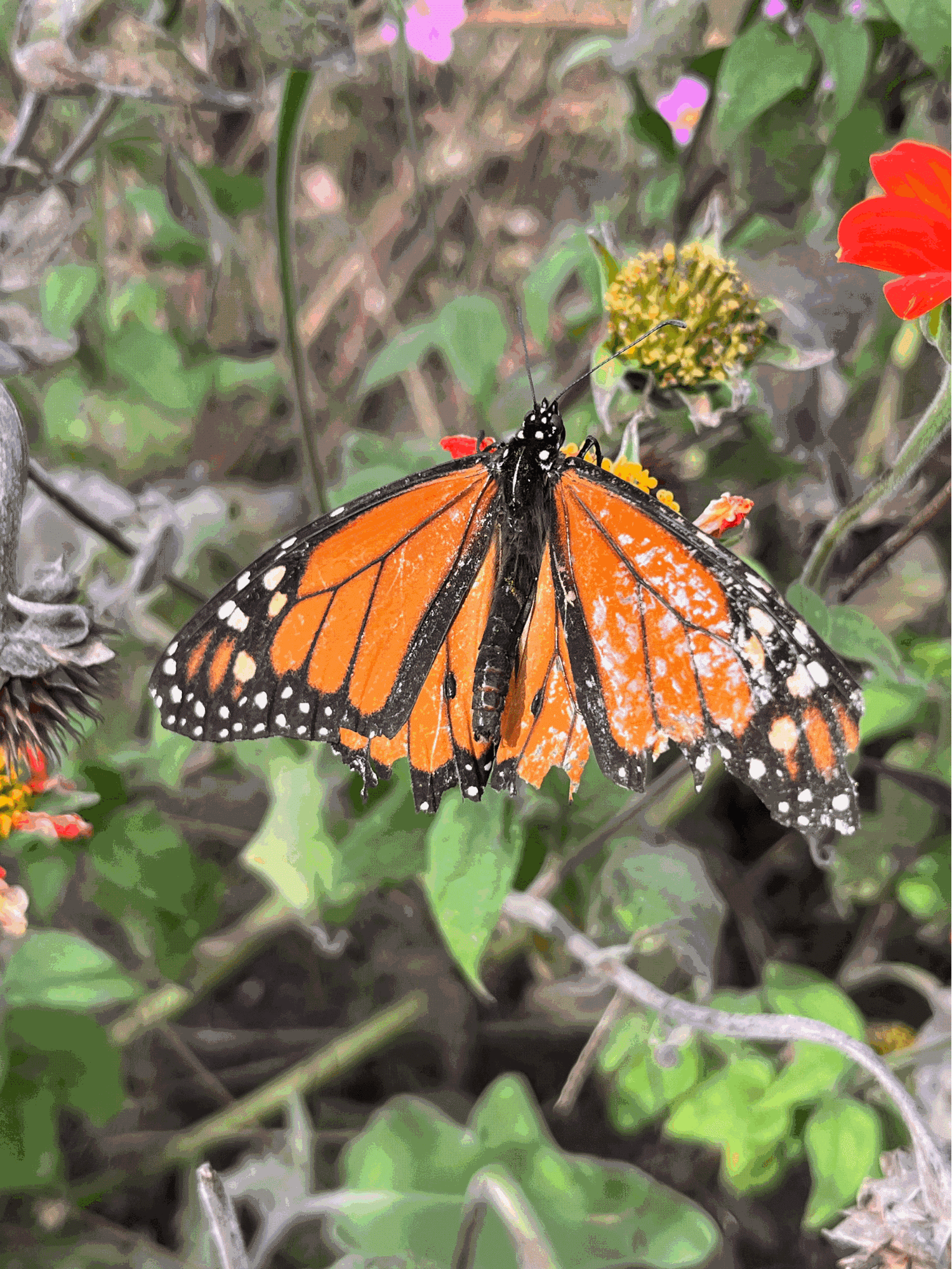
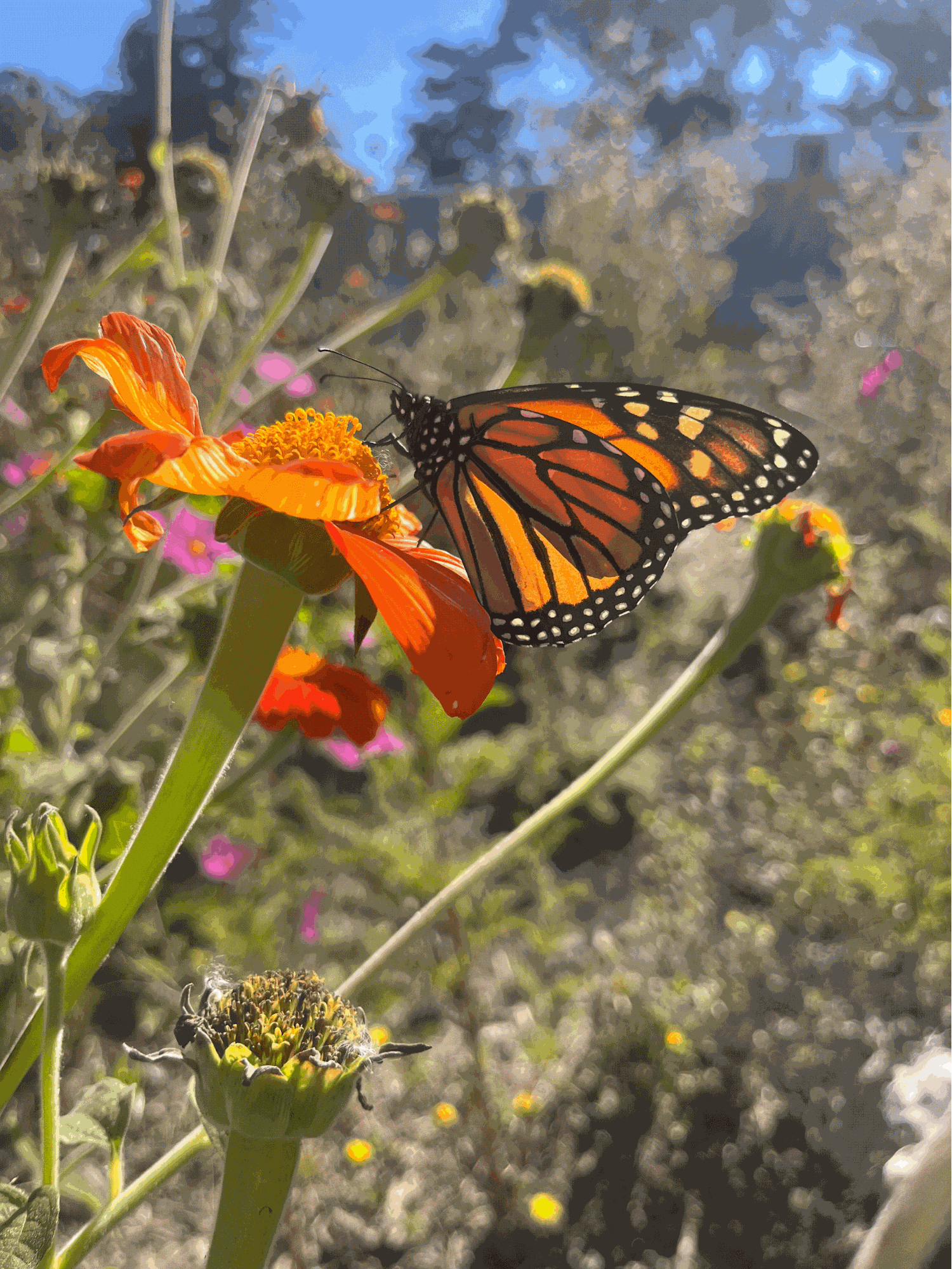
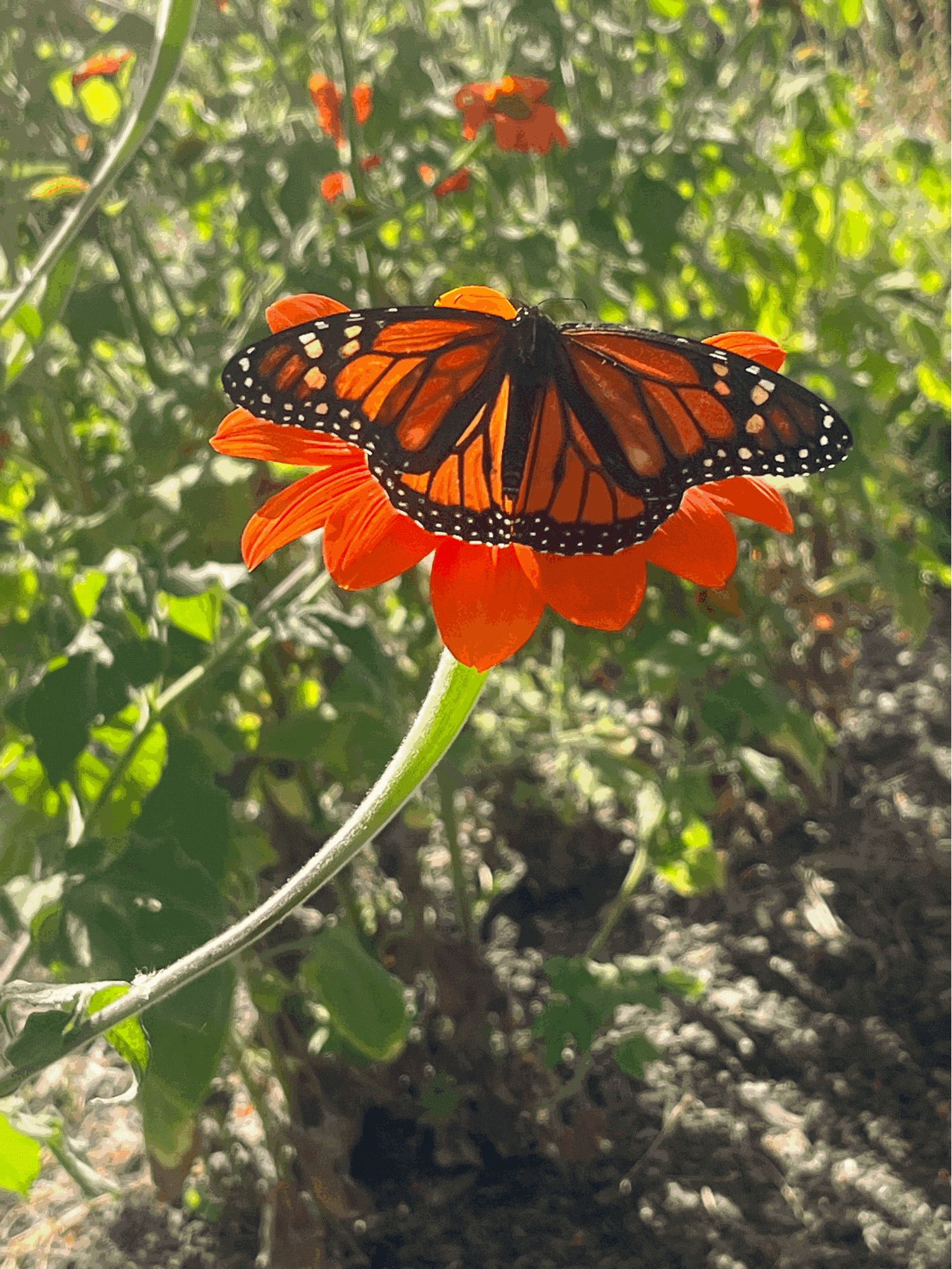
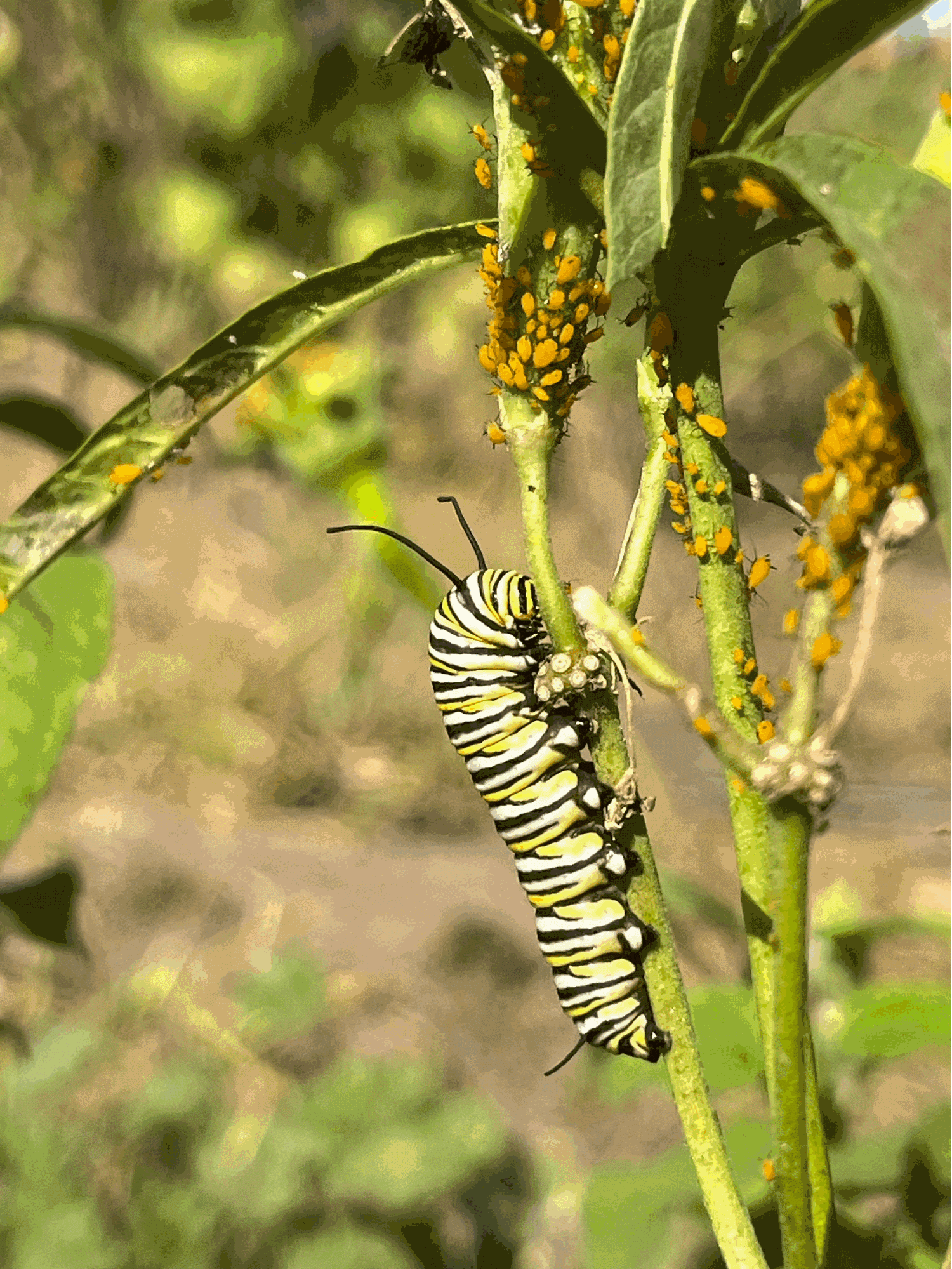
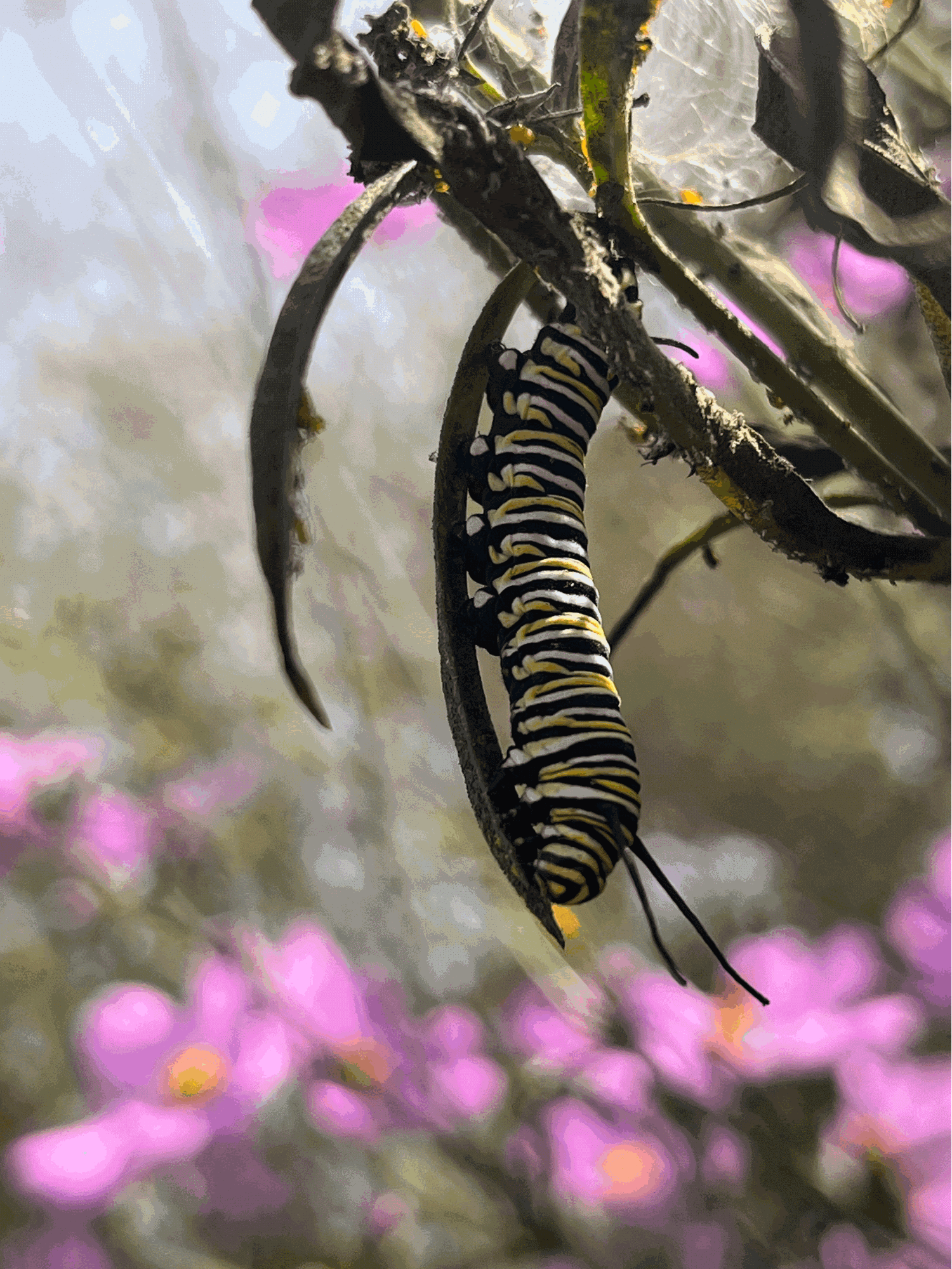
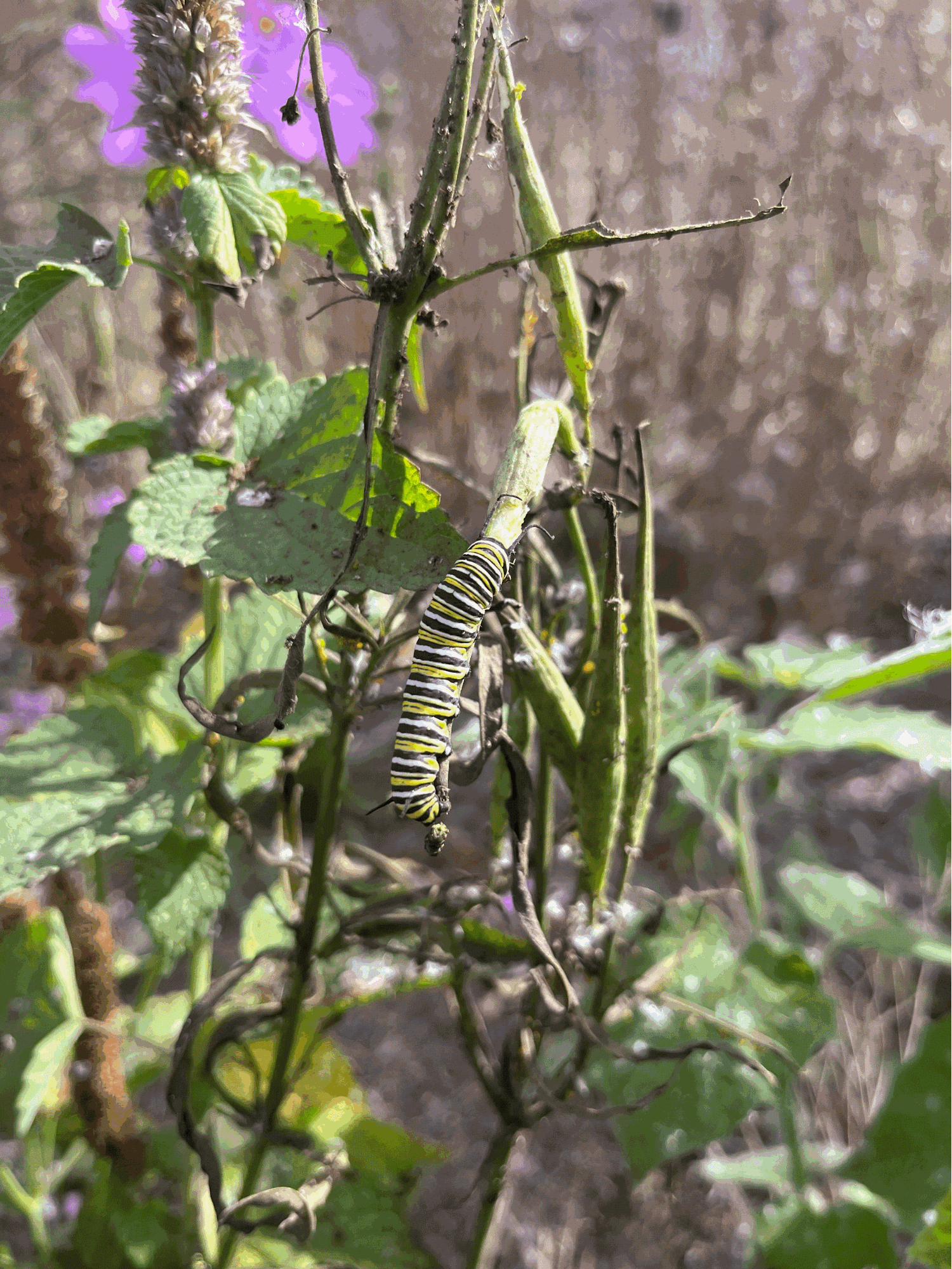






















Comments